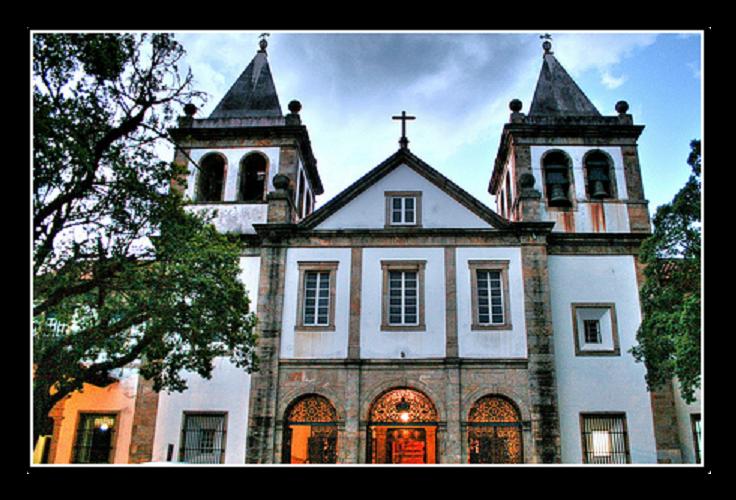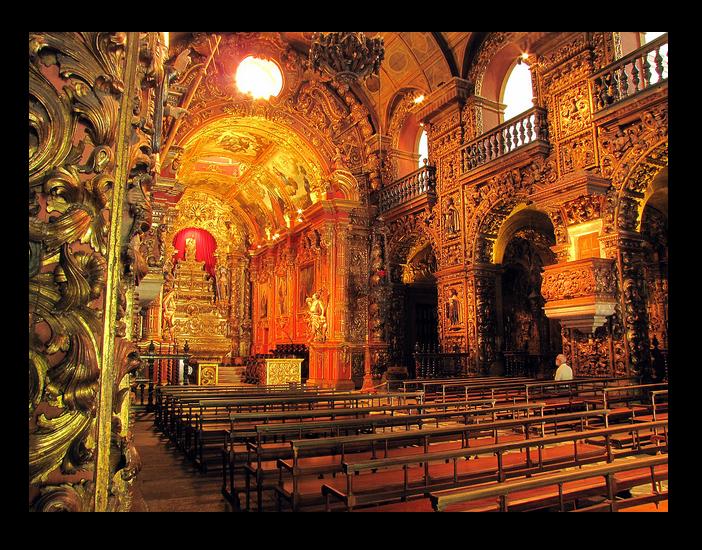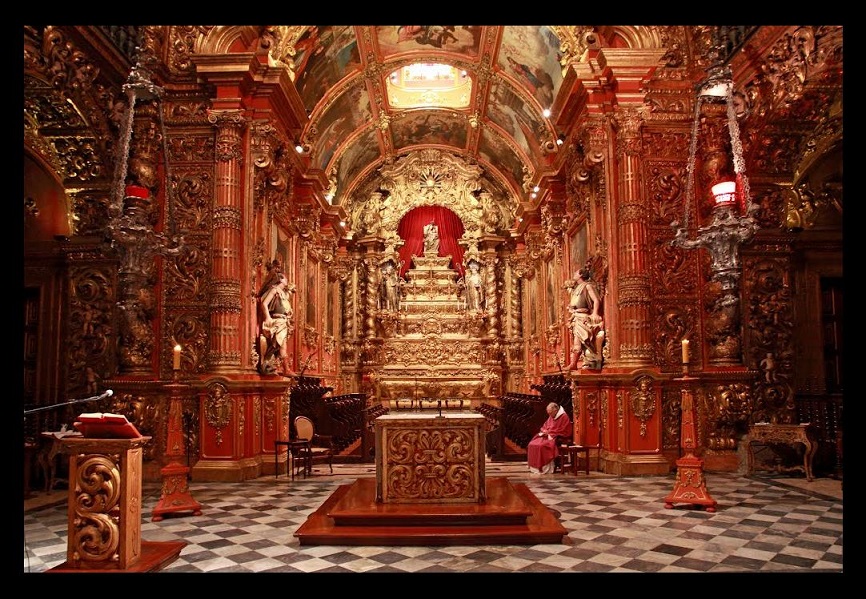Monastery of Saint Benedict of Rio de Janeiro
Description: Founded in 1590 by monks from Bahia, the Benedictine Monastery of Rio de Janeiro was built in response to the wishes of the city's early citizens. Nowadays, in the middle of a great metropolis, people still find a place of silence, peace, prayer, and diverse activities directed by the monks.
The two principal activities of the monastery are the daily celebration of the Divine Office and the Eucharist with Gregorian chant. The Abbey also houses Saint Benedict College, Lumen Christi Editions, the Theological School of the Brazilian Benedictine Congregation, the Emmaus Retirement House, the Social Department, and more.
Igreja Abacial (church abbey): The initial design of the church of the monastery is attributed to the military architect Francisco de Frias Mosque, and was probably developed from 1617 to 1618. The oldest part of the set is the frontispiece with its three arches, which were collected between 1666 and 1669, along with the choir. The church interior is coated wood carving gilded baroque style, dating from 1717 to the beginning of your placement. The nave is flanked by eight side chapels dedicated to the Blessed Sacrament, Our Lady of Conception, Our Lady of Pilar, Santo Amaro, Santa Gertrudes, São Lourenço, São Caetano and São Brás. In the background dominates the chancel, with the choir where the monks chant daily the Divine Office and the great altar of the titular church, Our Lady of Monserrate. At the entrance of the chancel sees the current high altar, where the main celebrant offers daily the holy sacrifice of the Mass.
Nossa Senhora do Monserrate (Our Lady of Monserrate): The image of the holder of the abbey church is placed on the high altar located at the bottom of the chancel. It was carved by a monk Frei Domingos da Conceição da Silva, and already existed in 1676. It was only in 1950 that a former golden nimbus was replaced by velvet curtains that are in the background.
The image of Our Lady of Monserrate is carved in high relief, and the images of the church body, the later period, came to match it. The boy's eyes were Jesus egg bird painted enamel, but were recently replaced by glass.


